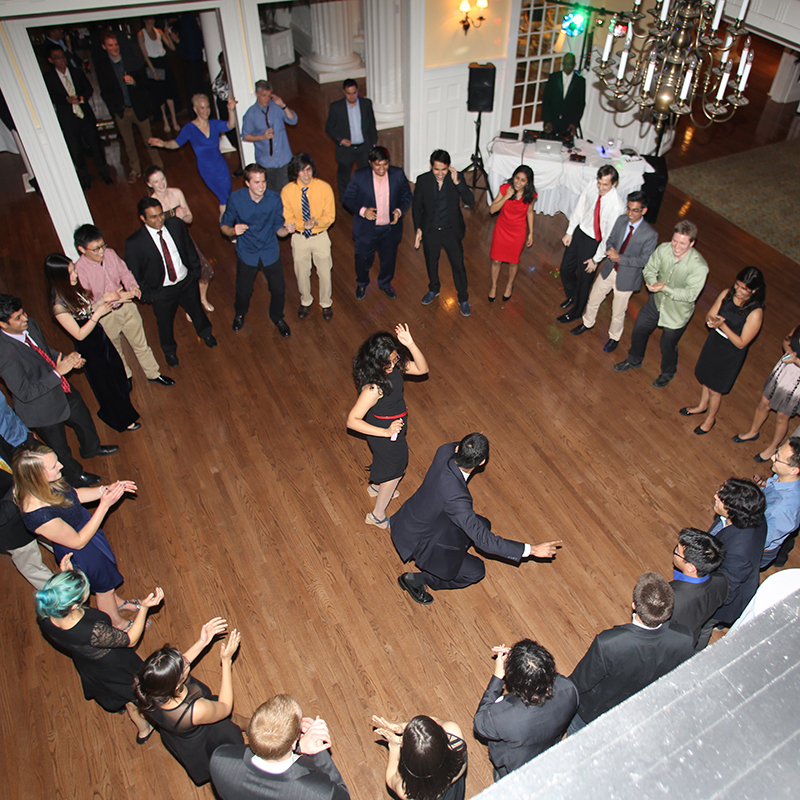A Fast & Efficient Mission Planner for Multi-rotor Aerial Vehicles in Large, High-resolution Maps of Cluttered Environments
Abstract: Unmanned aerial vehicles have many potential applications, such as monitoring crops and inspecting infrastructure. The potential benefits are greater if the UAV is semi- or fully-autonomous, requiring only occasional human oversight or none at all. This would allow the above use cases to be performed at lower cost, during any time of day, or [...]
Interactive Scene Understanding
Abstract Despite recent progress, AI is still far from understanding the physics of the world, and there is a large gap between the abilities of humans and the state-of-the-art AI methods. In this talk, I will focus on physics-based scene understanding and interactive visual reasoning, which are crucial next steps in computer vision and AI. [...]
Dynamic 3D Reconstruction from the Crowd
Abstract: With the advent of affordable and high-quality smartphone cameras, any significant event, such as a wedding ceremony, a surprised birthday party, or a concert, can be easily captured from multiple of cameras. Automatically organizing such large scale visual data and creating a comprehensive 3D scene model for event browsing is an unsolved problem. State [...]
Robotic Manipulation under clutter and uncertainty with and around people
Abstract Robots manipulate with super-human speed and dexterity on factory floors. But yet they fail even under moderate amounts of clutter or uncertainty. However, human teleoperators perform remarkable acts of manipulation with the same hardware. My research goal is to bridge the gap between what robotic manipulators can do now and what they are capable [...]
Mutual Information for Robust Visual Odometry
Abstract Off-the-shelf digital camera sensors often have limited dynamic range and real-world dynamic lighting changes adversely impact visual state estimation algorithms. This is because most conventional visual state estimation algorithms make the constancy of brightness assumption, wherein the intensity of a pixel is expected to be constant across small motions of a camera. However, this [...]
Measuring and Modeling Kinesic Signals in Social Communication
Abstract: Humans use subtle and elaborate body signals to convey their thoughts, emotions, and intentions. "Kinesics" is a term that refers to the study of such body movements used in social communication, including facial expressions and hand gestures. Understanding kinesic signals is fundamental to understanding human communication; it is among the key technical barriers to [...]
SLAM and 3D Reconstruction using Imaging Sonar
Abstract Underwater localization and mapping are unusually difficult problems in robotics due to the poor propagation of light through water, which prohibits receiving GPS signals underwater and using cameras to see more than a few meters in turbid water. Due to this, acoustic imaging sonars have been widely used on underwater vehicles as the primary [...]
2017 Robotics Institute Semi-formal
Please save the date! Pre-registration is required. Invitations will be sent out in April 2017. Robotics Institute members and a guest are invited to join us for our annual semi-formal. The evening will offer a reception including hot hors d'oeuvres, stations for carving, pasta, fruit, cheese, and dessert as well as hosted non-alcoholic beverages. Cash [...]
Probabilistic Approaches for Pose Estimation
Abstract: Pose estimation is central to several robotics applications such as registration, manipulation, SLAM, etc. In this thesis, we develop probabilistic approaches for fast and accurate pose estimation. A fundamental contribution of this thesis is formulating pose estimation in a parameter space in which the problem is truly linear and thus globally optimal solutions can [...]
Ada J. Zhang: Personalized Human Motion Classification
Abstract: Algorithms for human motion understanding have a wide variety of applications, including health monitoring, performance assessment, and user interfaces. However, differences between individual styles make it difficult to achieve robust performance, particularly for individuals who were not in the training population. We believe that adapting algorithms to individual behaviors is essential for effective human [...]









